The Best Fabrics for Travel
A nomad’s guide to packing light and surviving (almost) any climate, in style
My search for the holy grail of travel fabrics began back in 2015, on a trek through the Guatemalan highlands along the Pacific Ring of Fire - a surreal landscape sculpted over millions of years by more than thirty volcanoes, now home to many Maya communities. It was late December, leading up to Christmas Day.
Mornings started crisp and cool. Midday brought the sun, burning off the fog. Evenings turned chilly, and the nights, cold.
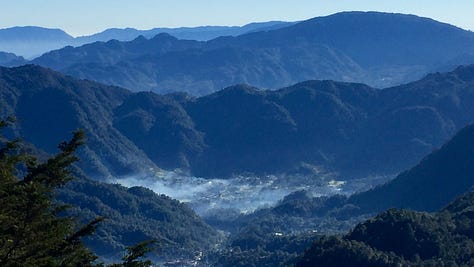


Since the journey spanned many days, I didn’t want to carry a heavy hiking backpack.
I reached for my 40L Osprey, which imposed a hard cap on the number of clothes I could bring. Every piece had to earn its place in a minimalist capsule wardrobe capable in a wide range of temperatures, from 04 - 24°C (40 - 75°F).
Ideally, the kit would perform in the wilderness and still look presentable around town.
In the lead-up to the trip, optimizing my gear - the weight, the use case, the look and feel - became a game of min-max. I discovered a passion for fabrics that carried me through Guatemala and into the next 10 years of my life as a “digital nomad”.
Snowy mountains high above the clouds, sun-splashed islands, tropical rains deep in the jungle... For much of the past decade, I’ve been living out of a suitcase across a kaleidoscope of natural and urban environments, refining my sense of what to wear when fashion and performance compete for priority and space is at a premium.
If you’re searching for a battle-tested field guide for what to wear on the road, you’re in the right place. And for folks following our 2025 roadmap here at The Lighthouse, rest assured: HOUSE OF SNOW is still very much underway!
Honestly, I’m a little bit intimidated by the project, which is how I know I need to write it. I’m making decent progress and will have more to share in the months ahead. In the meantime, I hope you enjoy this detour inspired by my recent travels through Alaska.
The Magic of “Nature’s Finest Performance Fabric”
If we’ve met in person, you’ve probably heard me preach the gospel of Merino Wool.
For context, the Merino sheep is descended from breeds brought to Spain by the Moors around the twelfth century. Its incredibly soft, fine wool was radically different from the coarse wool common in Europe at the time.
By the fifteenth century, Merino wool had become a cornerstone of the Spanish economy - so much so that exporting Merino sheep was punishable by death! The material was a luxury, strictly regulated by the Mesta, a powerful guild of sheep ranchers who managed Merino migrations across the Castilian plains.
Spain began gifting Merino sheep to its allies and royalty in the late 1700s. By 1797, the sheep had reached Australia with settlers keen on creating a wool industry. Today, Australia is the world’s largest producer of Merino wool, followed by New Zealand.
I first encountered Merino wool through Outlier, a clothing brand based in NYC with an experimental bent that “makes high performance clothing for the wild/city”. They describe the material as “nature’s finest performance fabric”, and after years of wearing it across a wide range of environments, I couldn’t agree more.
It’s like magic:
The fibers trap air like all wool does, lending warmth even when wet. But Merino fibers are so fine that excess heat and moisture can escape. The result is a fabric that’s thermoregulating. It adapts to the body’s microclimate, keeping you cooler when you’re hot and warmer when you’re cold. Merino breathes and wicks, and since it’s naturally bacteriostatic, it resists odor, so it can go a few wears between washings.
Just trust your nose.
Oh, and it’s naturally UV resistant, too!
The fineness of the fibers allows Merino to flow and contour beautifully. There’s no stiffness or boxiness in the drape, and because it retains a natural stretch and “memory”, it doesn’t sag or lose shape over time. The matte finish absorbs light, enhancing depth and shadow in the folds so that garments look more tailored.
When the diameter of the fiber is 17.5 microns or less, the hand feel is buttery soft. At 190 grams per square meter (gsm), it can be durable enough to wear every day.
In short, I love this stuff. If I could recommend just one thing, it would be Merino.
Yes, it’s expensive, but it’s unbelievably adaptable, comfortable, and surprisingly long-lasting. You’ll pack fewer clothes and get more mileage out of a Merino tee than you would a cotton one, and you’ll look better doing it.
Just to illustrate, I have three tees from 2018 that I’ve been wearing regularly. They’re just now starting to show their wear, after seven years of around-the-world service.
When to Use Synthetic Performance Fabrics
I’m sensitive to texture and feel philosophically aligned with natural materials, but sometimes you need a garment that’s been artificially engineered for performance.
Synthetic fibers are made from petrochemicals, materials derived from crude oil and natural gas. The plastic threads are melted, extruded, and spun.
Polyester came about in the 1940s and is prized for its durability, quick-drying nature, and wrinkle resistance. Nylon was developed earlier, originally for women’s stockings. It’s softer and stretchier than polyester, and the higher tensile strength resists abrasion, stretching, and shrinking. As a result, nylon is usually more expensive.
I don’t love the hand feel of synthetic fibers. They trap odor more than natural fibers do, and depending on the style of knit or weave, they’re usually less breathable.
For me, polyester and nylon are valuable primarily for their toughness.
If I know I’m going to be hiking with a heavy pack or moving through unpredictable terrain, then I might opt for something synthetic.
For example, I rely on an Aether Apparel sun shirt made of recycled birdseye knit polyester when hiking in hot environments. The textured knit increases surface area and airflow, facilitating moisture evaporation, while the interlocking pattern reinforces the fabric. In a cooler or rainy environment, I might reach for a nylon windbreaker to layer over a Merino tee. In both cases, I get the performance benefits of synthetic fibers while sparing my natural fiber garments from excessive wear.
Polyester and nylon can be blended with other materials to unlock additional benefits. A dash of elastane yields exceptional stretch and recovery… Adding cotton softens a synthetic hand feel… And Tencel - a sustainable, semi-synthetic fiber made from wood pulp like eucalyptus, processed with a chemical solvent - adds breathability.
My favorite example of a synthetic performance fabric can be found in Outlier’s Slim Dungarees. I’ve been wearing them almost exclusively for the past decade. They’re advertised as “the pant to travel the world in”, which is exactly what I’ve done.
The Dungarees weigh in at 275 gsm, and after breaking in a little bit, they transform into a second skin with a flattering silhouette, thanks to the cut and construction.
The outer face weaves rugged Cordura-grade nylon, while the inner face weaves a nylon-polyester blend for subtle softness. Elastane affords some stretch, and a finishing Durable Water Repellent (DWR) causes water to bead off instead of soak in, adding light but durable water and stain resistance.
Schoeller, the 150-year-old Swiss mill that makes the fabric, just shut down, so I’ll have to find a new daily driver when my Dungarees wear out years from now.
How to Manage Temperature Extremes
One of the challenges of living out of a suitcase is solving for temperature extremes. Space is at a premium, so it’s not like you can pack your favorite winter jacket.
The hack? 800+ fill-power goose down. Down is the fluffy layer of fine filaments found beneath the exterior feathers of geese. These tiny puffballs trap air, creating pockets of warmth while allowing moisture to escape, making them thermoregulating, breathable, and lightweight. It’s warmer for its weight than almost any synthetic alternative, and because of its loft, goose down compresses beautifully.
However, down tends to clump and collapse in moisture, necessitating a rain layer. But you should be packing one of those anyway.
Down is versatile, reliably comfortable in 04 - 15°C (40 - 60°F). Add a wool sweater (I love mine from North Sea Clothing); Merino base layer; and Merino hat, scarf, and gloves to help weather colder environments.
I don’t have much experience in temperatures dramatically below zero, but I managed to survive a bomb cyclone in New York City with this kit just fine!
But what about the other extreme, when the air is thick and the sun unforgiving?
To fight the heat, I call upon the power of Merino Wool. Surprise!
Linen, too, is a useful ally. People have been cultivating linen for more than 6000 years, making it one of the oldest natural textiles on Earth. It’s a bast fiber - meaning it comes from the inner bark of the plant - so it’s quite labor-intensive to produce, driving up the price… But it’s worth it.
The hollow fibers of the flax plant allow air to circulate freely, making linen ideal for hot and humid climates. It actually feels cool to the touch. Linen can absorb up to 20% of its weight in moisture before feeling damp, so it’s naturally moisture-wicking. Flax resists bacteria and irritants, so linen is antibacterial and hypoallergenic, too.
From a durability standpoint, linen tends to soften over time instead of wear out. It has a beautiful, casual drape with a bit of stiffness that gradually relaxes into a floating wispiness. The fabric wrinkles easily, which bothers some people, but it’s a part of the charm. Linen lends itself to a breezy, lived-in, timeless aesthetic that ages gracefully.
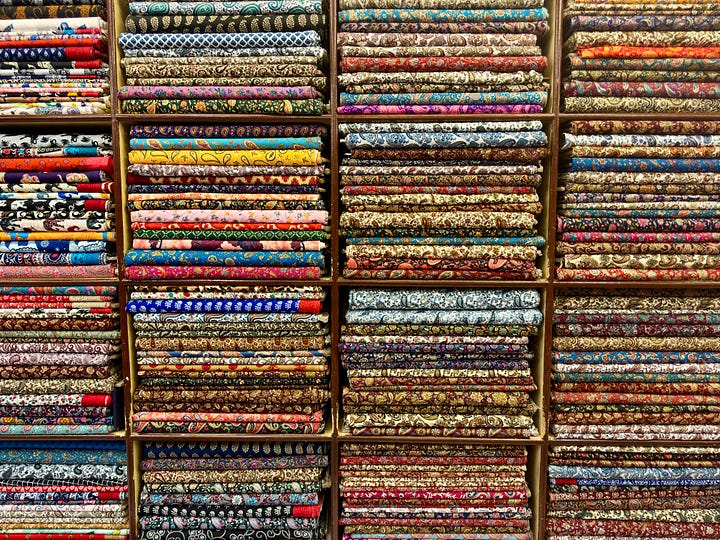

Curating Heirloom-Grade Materials that Tell Your Story
No discussion of travel-worthy materials would be complete without considering leather. Although not a “fabric” strictly speaking, it was the original all-purpose material. In fact, its use predates recorded history.
By the Neolithic period, tanning techniques had begun to develop, and hides were preserved, softened, and waterproofed with animal fats, smoke, and tree bark tannins.
Roman soldiers marched in leather sandals. Medieval traders trusted leather coats to keep them warm on treacherous journeys. During the Age of Exploration, leather was the duct tape of its time, an everyday material that quite literally held the era together, used in everything from boots to bags to bindings.
Leather isn’t the lightest material, and it requires proper maintenance. For example, I condition my full-grain, vegetable-tanned, decade-old Saddleback at least twice a year - but in exchange, it promises to outlive me and look better the older it gets:
Leather darkens with time and assumes a soft sheen called “patina”, a visual record of its journey. Every scuff, scratch, and stain tells a story, blending into the patina beautifully. Leather is an organic material - literally a skin that breathes, reacts, evolves - its imperfections adding texture, depth, and character.
Leather also molds to your body and movements.
In other words, it becomes uniquely yours in a way that no other material manages.
Waxed canvas comes close. Its roots trace to the eighteenth century, when mariners applied linseed oil to flax sails to help them catch the wind and repel water. Eventually, cotton sailcloth replaced flax and wax replaced oil, since wax didn’t rot the fabric.
In the early twentieth century, waxed canvas became standard issue for soldiers, aviators, and explorers, prized for its durability and water resistance. Like leather, it’s heavy and requires proper care, but it ages beautifully. The patina tells the story.
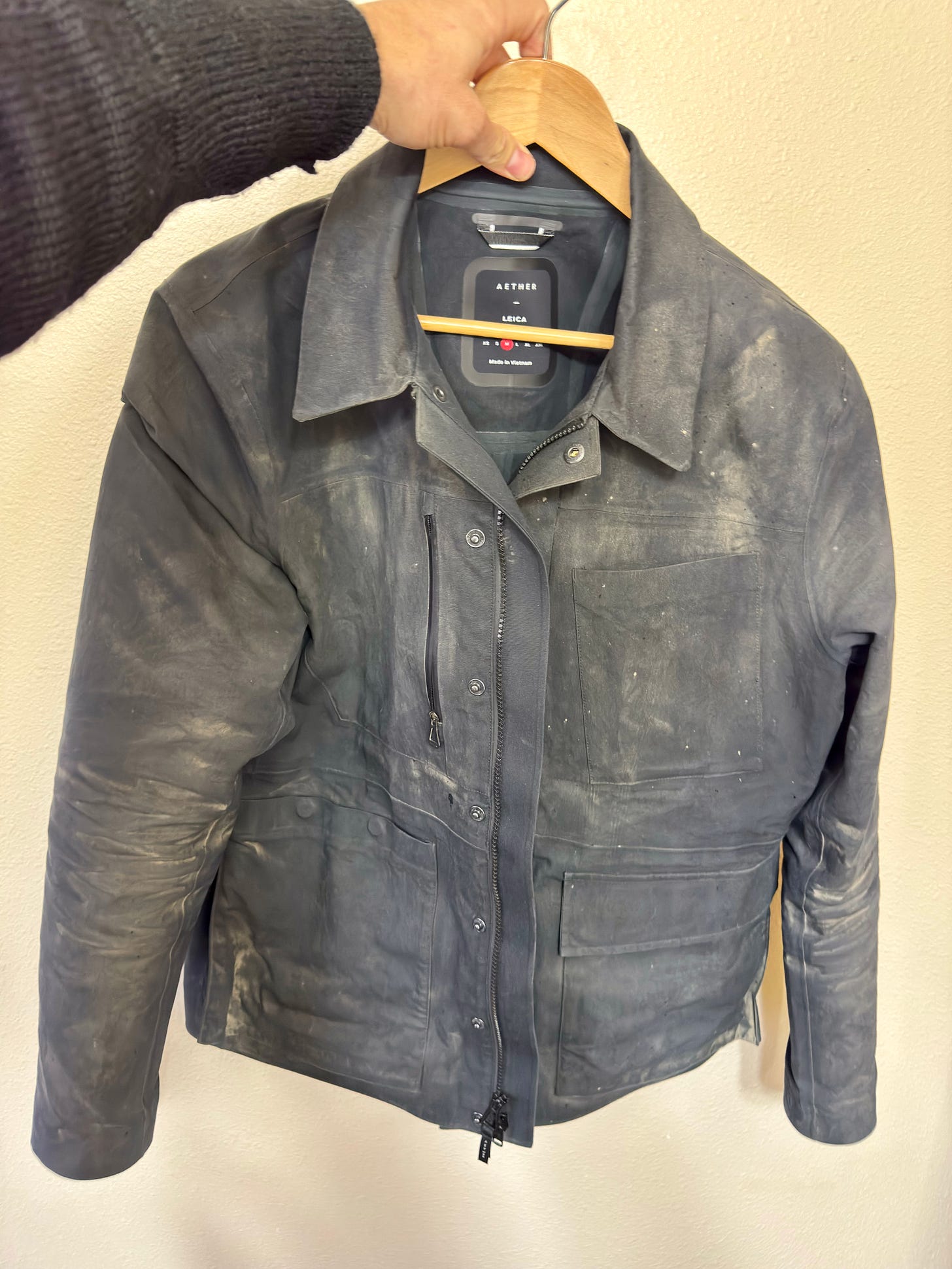
Maintaining my gear is both necessary and rewarding.
It’s a ritual for me, as vital and grounding as making a morning coffee. I’ve loved watching the patinas develop over the years.
Why Cotton Doesn’t Make the Cut (Most of the Time)
Cotton is a go-to fabric for many people.
It accounts for around 25% of all textile fiber use worldwide - much of the rest is synthetic, like polyester - and some estimates suggest cotton is used in as much as 75% of all tees. The problem is that traditional cotton absorbs and retains moisture. It loses insulation when wet and can feel cold or clammy against the skin.
For performance, Merino wins every time.
Still, not all cotton is created equal!
Upland cotton, a short to medium-long staple fiber, makes up roughly 90% of the world’s cotton and is what you’ll find in most mass-market garments.
By contrast, Pima cotton is extra-long staple, meaning longer, silkier fibers that produce a softer, stronger fabric. It’s grown in Peru, Australia, and the United States, where it’s sold under the name “Supima”.
“Organic” cotton has nothing to do with fiber length. It simply denotes how the cotton was grown, and unless it’s long staple, it tends to have a rougher hand feel.
My two cents? Skip cotton for travel unless you love a particular piece. Sure, Pima is cozy, but so is Merino, and Merino does more.
As an aside, I recently stumbled across Supermarine cotton, a nearly forgotten World War II textile. Developed by the British to keep downed pilots alive in the frigid waters of the North Sea, this dense, complex weave of extra-long staple fibers is exceptionally durable, water resistant, and windproof. Supermarine cotton was later used in Antarctic exploration and by Sir Edmund Hillary during the ascent of Everest.
The advent of GoreTex pushed it out of the spotlight, so it’s hard to come by today, but I’m keen to check it out firsthand. Any time a natural material outperforms a synthetic material, I’m there for it.
The Strategy Behind a Travel-Ready Capsule Wardrobe
My life is lived in motion, out of a suitcase. I need my clothes to mix and match effortlessly while performing in a variety of scenarios, which aligns me with the slow fashion movement. That means choosing quality over quantity. It means valuing sustainable materials, ethical production, and tasteful, understated design.
Here, I’m reminded of Terry Pratchett’s “’Boots’ theory of socio-economic unfairness”, from his 1993 novel Men at Arms:
...A really good pair of leather boots cost fifty dollars. But an affordable pair of boots, which were sort of OK for a season or two and then leaked like hell when the cardboard gave out, cost about ten dollars… But the thing was that good boots lasted for years and years. A man who could afford fifty dollars had a pair of boots that'd still be keeping his feet dry in ten years' time, while a poor man who could only afford cheap boots would have spent a hundred dollars on boots in the same time and would still have wet feet.
I haven’t always been in a position to choose the “good” pair of something, but when I have been able to invest, I’ve done so gratefully.
It pays dividends in cost, comfort, and cut.
Of course, a minimalist approach constrains your fashion choices. I’ve sunk a not inconsiderable amount of time into brainstorming how best to maximize outfit options in a capsule wardrobe. In my case, these days, limiting bottoms to one neutral color (black) reduces mental load and frees me to be more expressive with my tops.
I’ll think, too, about how different textures can elevate an outfit - color isn’t the only lever. For example, how might the free-flowing, imperfect nature of linen interplay with the sleek weave of a slim-cut synthetic pant?
Look, there’s no way around the fact that a capsule wardrobe is a compromise.
It’s like that aphorism you hear in filmmaking circles, “Good, Fast, Cheap - pick two of three”… “Packable, All-Season, Styled - pick two of three”. The goal is to collapse the space between these three as much as possible, by strategizing textiles, hand-picking versatile pieces, and coordinating colors and textures.
I hope my decade of trial and error can be of use to you as you prepare for your next trip. I’d love for you to avoid getting caught in a downpour in denim that refuses to dry!
For me, this is about more than what clothes to pack.
Over the years, I’ve found that owning less creates more space in my life.
The possessions I do have mean something… They solve specific problems and connect me back to nature, history, and myself. In so doing, they tell a story of their own, and that empowers me to move through the world with greater intention.
It’s a way to slow down.
To appreciate what I carry and attune to life’s simple pleasures, like the luxurious softness of Merino. Or the satisfaction of staying dry on a stormy trek through the mountains, listening to rain patter the hood of my jacket. Or the ease of moving from frisbee on the beach at sunset to dinner with new friends, wearing the same thing.
Sure, sometimes it means finding yourself underdressed at a super swanky rooftop restaurant in Bangkok, obliging you and your partner to charm your way past the maître d’ while shrugging off a few confused stares - but honestly?
That was a fun story to live, too.





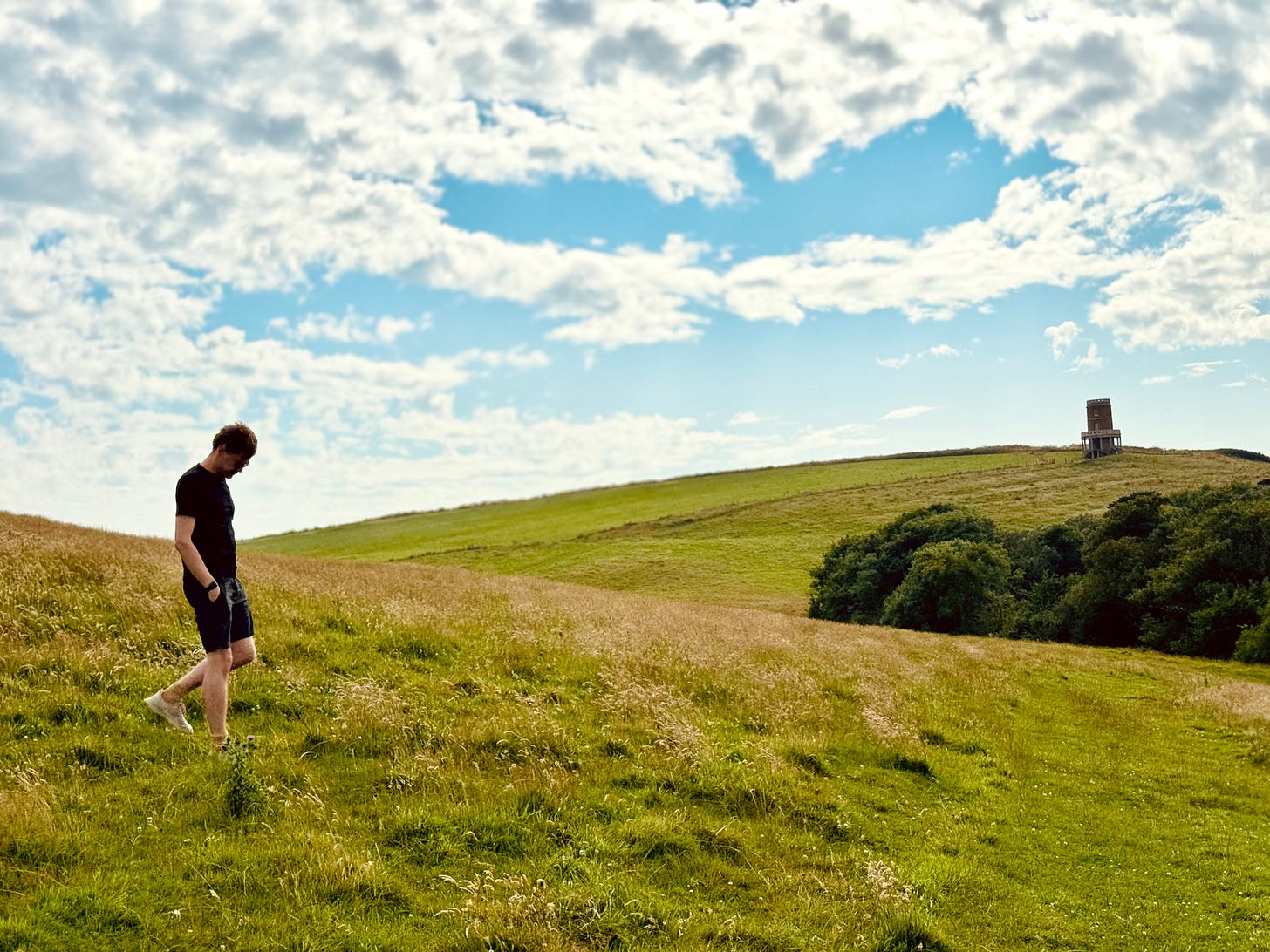


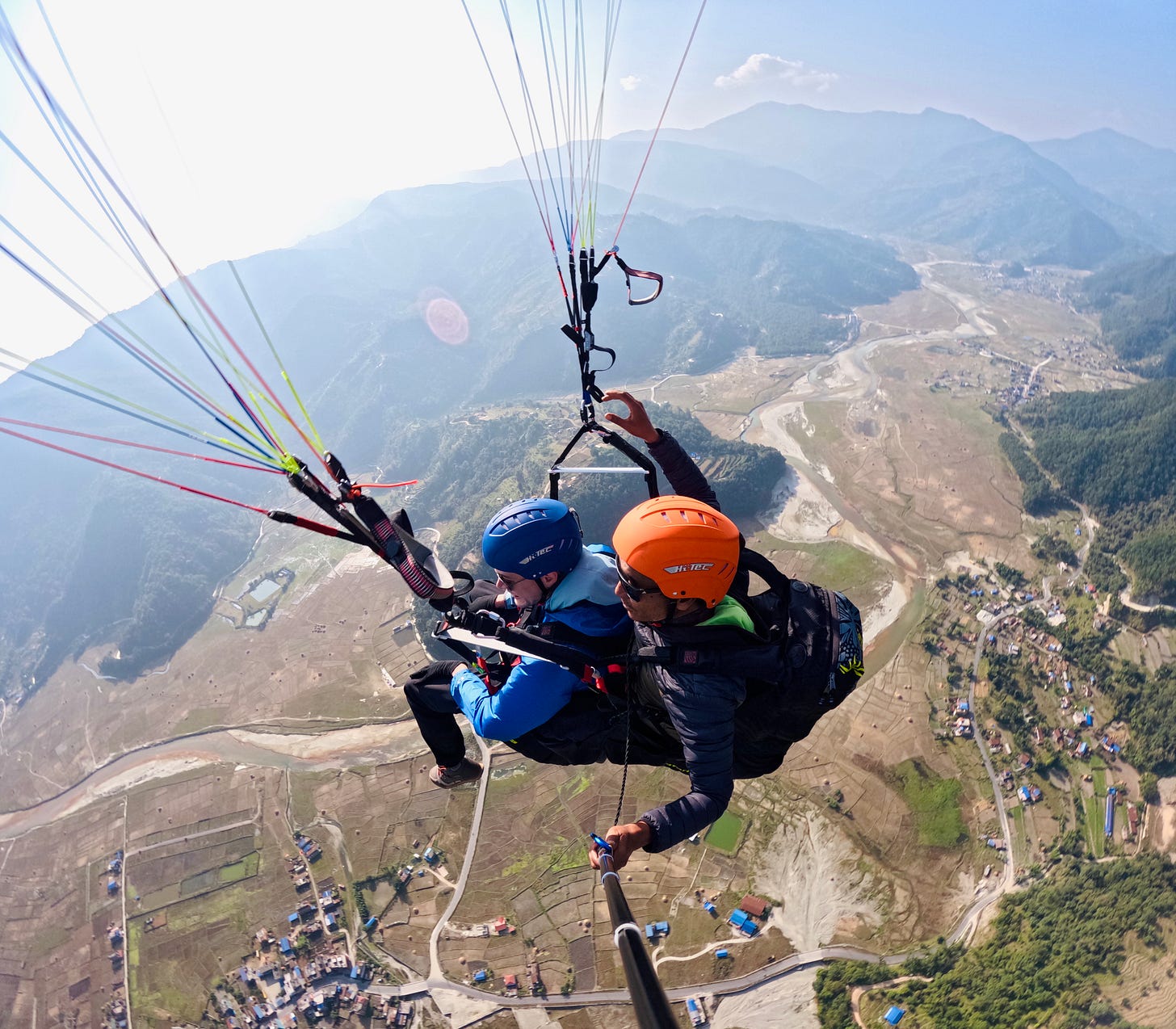











"It’s like that aphorism you hear in filmmaking circles, “Good, Fast, Cheap - pick two of three"." For employees it's "Competent, Reliable, Pleasant". I'll let you decide which of those I'm not! (And for prospective romantic partners the saying is "Hot, Sane, Single". Again, I'll let you decide.)
Polyester is indestructible. I've been wearing the same 100% polyester football top to Partick Thistle matches for over thirty years. Other than a couple of holes caused by sparks from a campfire, it's as new. It's one of the reasons there was such a huge market for 90s football shirts during and after covid (I saw mine on sale for £200) - they last forever and nobody throws away a football shirt.
Ordering more merino (my t-shirts are fine, but socks and underwear don't last as long) is actually on my list of things to do this week. I've heard good things about bamboo though. Any thoughts?
“Owning less creates more space in my life.” 💯💯💯💯 thank you for this super educational post, Michael!!! I’m curious if there are any merino wool brands you’d recommend? specifically ones you can purchase from online in north america? 😅 would love to start building a proper capsule wardrobe before I jet set off again!